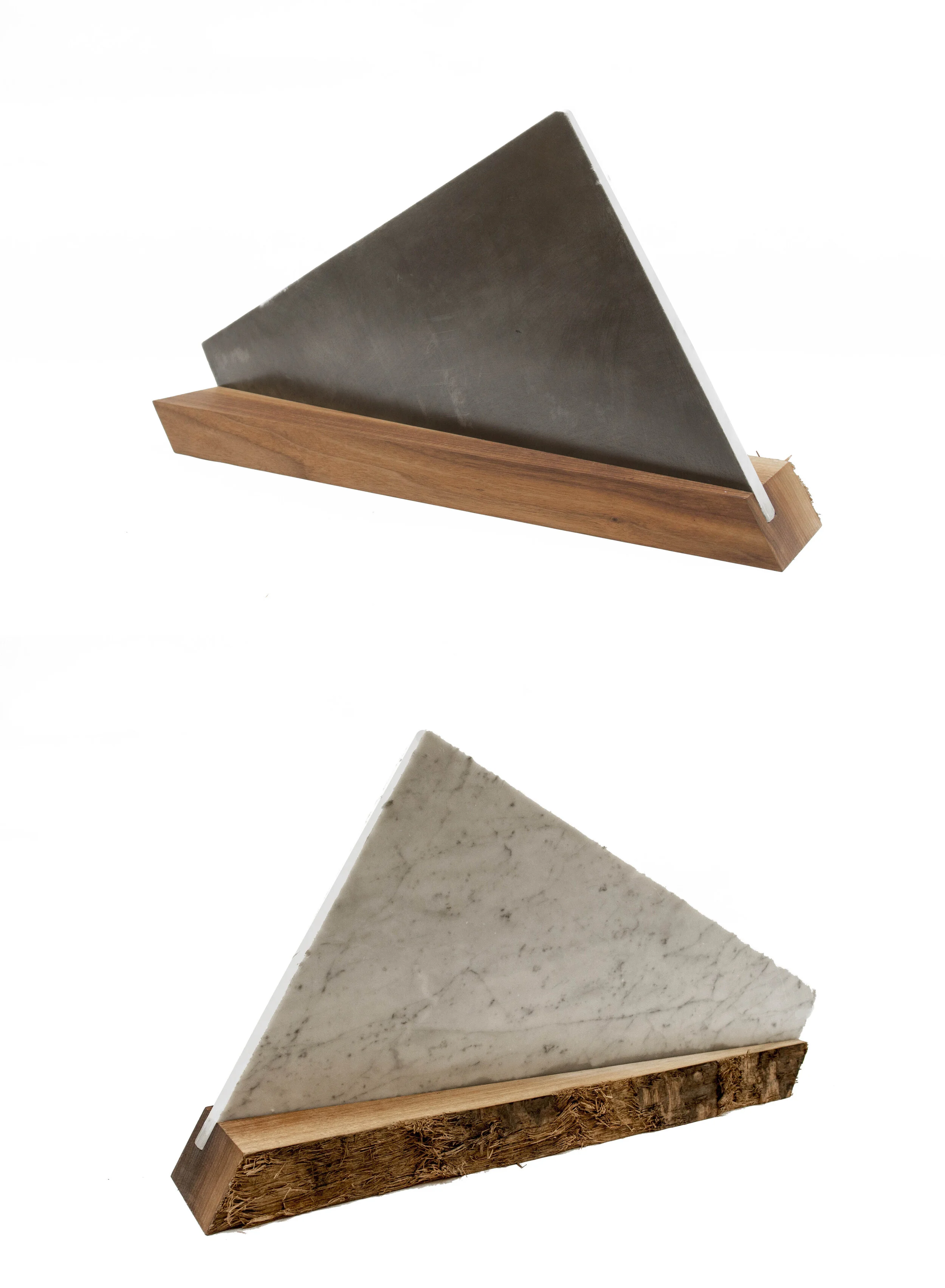Li-ion Drawings
Li-ion is a series of photo-realistic drawings and ceramic sculptures inspired by three global lithium ponds impacted by technology located in the Salar de Uyuni in Bolivia, Silver Peak in Nevada, and the Mojave Desert. I tracked each site with earth imaging satellites. I then rendered photo-realistic drawings from these images to make private images publicly accessible. In the act of drawing, I raised questions on current ways of seeing landscape through contemporary mapping technologies. I dug clay, a natural companion of lithium, at the Nevada site, and molded it over lithium salt rocks to create abstract sculptures.
These ponds are extractive zones, in conflict with national parks, clean water, and indigenous traditions. Lithium is in increasing demand from major corporations to produce lithium-ion batteries found in smart technologies. My research, drawings, sculptures, and artist books are motivated by studying the industrial history of each zone and satellite imagery as a technology for power. Clay served as trace evidence of the land’s extractive legacy. Each kiln firing yielded different results due to unknown chemical makeup of the clay from a legacy of mining.
A deep look into earth and sky, I tell the story of past, present, and future. Silver Peak’s clay reveals a history of greed in its centuries old search for mineral riches; the Mojave (a new site in the exploratory phase of extraction) is the current moment of exploitation. Satellite images, used to view and map land are present and future tools of colonization in the Americas while simultaneously expanding understanding of the complex earth systems at play with climate change.
The Earth Rolls from Under
Solo Exhibition at Some.Time.Salon
San Francisco, CA
Press Release
Rachelle Reichert researches the usages and associations of her mediums by weaving story lines of scientific innovation and ecology into her art. At Some.Time.Salon (STS), Reichert will show work created while an artist in residence at Planet Labs (an earth imaging and aerospace company based in San Francisco) and Signal Fire (a weeklong camping residency in the Cascade Range near Portland, OR).
In The Earth Rolls from Under, Reichert uses drawing to explore the distance between a personal understanding of humanity’s impact on the planet and the representation of this impact depicted in satellite photography. During the settlement of the American West, the exploitation of natural resources occurred in conjunction with the glorification of the West as an idea - a sublime landscape imagined and reproduced in epic paintings by artists such as Albert Bierstadt and Frederic Edwin Church. Satellite images are hybridized, composite mosaics of photographs from varying dates and times woven together to create the most compelling image (and to hide proprietary technology from competitors). Reichert’s work investigates the implications of these manipulated photographs and the consequences of not acknowledging the scars our consumption has created on the Earth’s delicate surface.
A series of small graphite drawings depict the Fort McMurray fires at the Tar Sands in Canada. These fires and the fossil fuel extraction surrounding them sparked a national debate on climate change. Reichert references the unedited images that do not reach public consumption. The resulting works are subtly abstracted aerial landscapes playing with the dichotomies of light and dark and geometric and organic form. Bulbous clouds drift toward the viewer and large triangular planes of solid graphite slash through the compositions.
In the largest piece on view, rectangular and spherical shapes filled with graphite drawing bisect and overlap at odd angles, visually mimicking the way satellite imagery is collaged. Reichert drew from satellite images taken of the land during the time she was camping on Mt. Hood for the Signal Fire residency. Reichert’s drawing aims to expose the deforestation threatening that wilderness and how the manipulation of the satellite imagery may mask this fragmentation.
With ancestors in Italy, Reichert became interested in Carrara marble, which comes from a famous mountain that has been mined for over two thousand years and used in iconic examples of art and architecture such as the Pantheon and Michelangelo’s Pieta. She finds irregular scraps from the supplier rather than paying for new material. A marble sculpture imitates the peaks and valleys of mountainous terrain absent from Reichert’s drawings. The piece instills upon the viewer an enduring theme in all of Reichert’s work - the preciousness of this Earth and the care with which we should approach it so it does not become thus - cold and barren stone.
Grounding Stones Drawings
This work was created during the COVID-19 lockdown of 2020. During this time I sought to connect with the geologic features of Oakland, California, where I live and work. Grounding stones are tools for coping with anxiety. One might carry a stone in their pocket and rub it when tensions feel high. I managed my anxiety by drawing, making graphite rubbings of Ribbon Chert and Serpentinite rocks exposed alongside hiking trails and local neighborhood roads. Accompanied by my one year old and partner, each week for six months of 2020, I would set out onto local trails to create rubbings. After rubbings were collected, I took my drawings to the studio where I highlighted, erased, and rendered different elements of the composition to create collaborative drawings with the rocks.














































